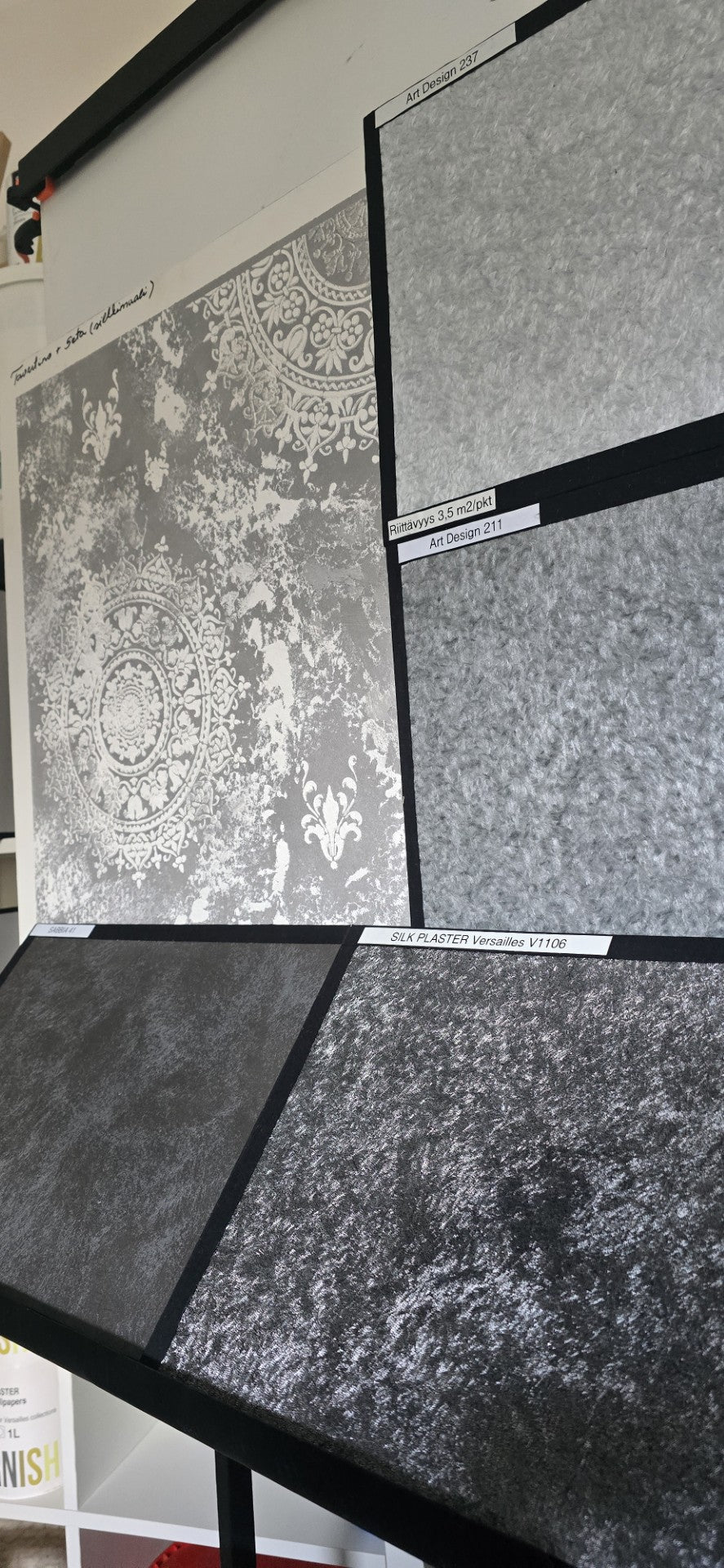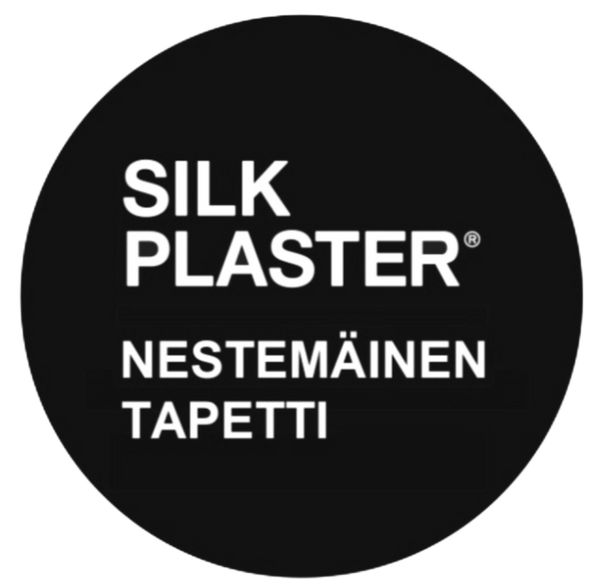Installation instructions
Ground work: the surface to be installed must be dry, clean and free of stains. The old wallpaper, glue and screws should be removed from the wall before installing the liquid wallpaper. Use a moisture barrier/primer before installing the wallpaper. When installing on plasterboard, wood and other old surfaces, we recommend using 2 layers of waterproof primer/moisture barrier or oil-based primer. If the moisture barrier is not done, light wallpapers in particular may end up looking yellowish! The primer of the liquid wallpaper contains quartz sand, which makes the bottom surface rough and therefore easier to install the wallpaper.
1. Pour clean water at room temperature (without sediments and impurities) into the container, the required amount of water is marked on the package. We do not recommend mixing the wallpaper with well water known to contain metal.
2 . The fibers in the package and, if desired, silver or gold glitter are mixed with the water in the container.
3. Mix the mass properly by hand. DO NOT USE A WHISK FOR MIXING. Leave the mass to infuse for 12 hours.
4. The mass is installed on the wall as a thin layer with a thickness of about 1-2 mm. The installation is best done with a plastic spatula with a flat surface, which you can buy in our online store. When installing, the spatula is held at an angle of 10-15 degrees. If you cannot use the entire pre-mixed mass at once, you can store it in a sealed plastic bag for the next day.
The installed wallpaper has finally dried within 24-48 hours, depending on the room temperature and ventilation. The finished mass can be kept wet for a maximum of 2 weeks. The remaining mass can be dried when spreading it on plastic and later used for spot repair if necessary.
To increase wear resistance/moisture resistance, dried liquid wallpaper can be varnished, it also enables wet cleaning.
NOTE! Once Liquid Fabric Wallpaper has been coated with varnish, it can no longer be reused or repaired. Therefore, before installing the varnish, make sure that the wallpaper has been installed in the place you like and in the way you like (thickness that suits your taste, and that the entire surface was filled with wallpaper paste. If there are so-called gaps in the wall surface, you cannot fill them after varnishing.)!
DISCLAIMER The instructions and recommendations we announce are based on our tests and experience. They are intended to assist the user in finding the most suitable way of working and to achieve the best possible end result. Since the storage, transportation and working conditions of the user of the product are beyond our control, we cannot take responsibility for the results he obtains when using the substances and instructions we recommend.

